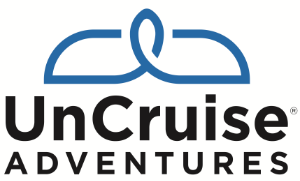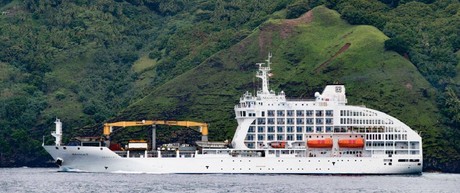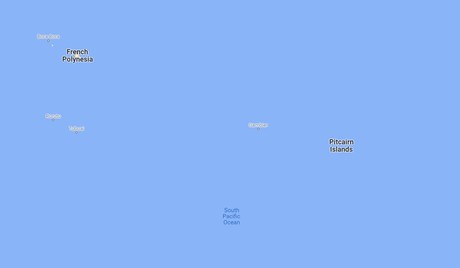Austral Islands Cruise
Discovered by Europeans in the 18th Century, the Austral islands are located 600 km south of Tahiti. Off the beaten track, the Australs are an untouched and mysterious land where white sand clashes with the intense blue of the lagoons. Breathtaking landscapes, from sheer mountains to valleys, these islands are famous for their farming activities. The Austral islands will certainly offer a memorable and unique experience. * this trip does not carry freight.
Highlights
• Rurutu, Austral Islands
• Rimatara, Austral Islands
• Rapa, Austral Islands
• Raivavae, Austral Islands
You will embark on the Aranui 5 in the morning, receive a warm welcome from our crew and begin the long journey to the Austral Islands.
Rurutu, one of the two largest raised atolls in French Polynesia, is unique because of its geological structure which is surprising as one does not expect to discover such landscapes in the South Pacific. Basalt and limestone cliffs dotted with caves where islanders once lived, a volcanic interior with lush tropical jungle, white sand beaches and beautiful bays offer breathtaking views. fROM August to October each year, humpback whales can be seen and heard in Rurutu, where they come south to mate and give birth.
The Aranui is adrift – tenders to the pier of Moerai. Welcome in the village of Moerai. Visit of the Mitterand cave, the handicraft center with weaving demonstrations. Local coffee for sale. Visit to the Royal House, well known for the confection of local patchwork quilts, the « tifaifai », followed by a demonstration of “stone lifting” (traditional custom). Circle island tour by « truck », starting from the Northern or Southern coast. In the North, visit to the « cave Mitterand », the marae in Vitaria’s village. In the South, swimming at Naairoa’s beach, taro plantation visit with explanation about the cultivation system, old houses made of lime stone.
The Aranui is adrift – tenders to the dock. Welcome with a walk through purification smoke (ancient tradition of Rimatara’s inhabitants). Although Rimatara is the smallest of the Austral Islands, it charms the visitors with its hidden treasures. In the hollow of this circular island, one has the impression that time has stopped. Departure for a circle island tour by bus and visit to the villages of Amaru, Anapoto and Matuaura. Visit of handicraft centers. In Rimatara, the main occupation of the inhabitants, apart from agriculture, is basket weaving and especially the preparation of fara pae’ore leaves (a variety of pandanus without thorns) which are used to make cloth.
Tubuai is the largest island of the archipelago and is the administrative and economic capital of the Australs. The huge lagoon, nearly twice as large as the island itself, offers 33 sq. mi. (85 km²) of pure aquatic fun. The mild climate also makes these islands ideal for farming. The first explorers were struck by the island’s beauty. Toward the end of the 19th Century, explorers Wallis and Cook took a liking to the lush vegetation and crystal-clear water of the island. However, the area did not look appropriate for good anchorage given the large barrier reef around the coast. This disadvantage turned into an incredible advantage in the eyes of the famous mutineers of the HMS Bounty.
Enjoy a day at sea to relax by the pool and participate in one of the lectures or activities offered by our guides.
As you approach Rapa, only accessible by sea, the Captain may announce: “Welcome to Rapa. Next stop Antarctica”. As the southernmost inhabited island of French Polynesia, this crescent shaped land mass — with a fjord-like coastline deeply indented by 12 bays —is as remote as it gets. Rapa-Iti, or “small Rapa” as the island is also called, has a strong cultural connection to Easter Island, known as Rapa-Nui or big Rapa to the Polynesians. Legend tells of the settlement of Rapa-Nui by the people of Rapa-Iti. Once home to fierce warriors who lived in fortified settlements built on terraces among volcanic peaks, the islanders now live off farming and fishing. During our visit, you will be greeted by the unique dances of Rapa. You may choose one of two different hikes offered. The first goes from the village of Area around the stunning bay to the main village of Ahurei and the second ends at the ruins of an old mountaintop fort. A traditional lunch will be served on shore.
Among the other activities on offer during our one and a half day stopover in Rapa, you will visit Ahurei, the main village of the island, explore ancient fortresses, visit an agricultural production centre, discover local arts and crafts, meet the inhabitants of this isolated island, and share a ma’a over a wood fire in the village.
Enjoy a day at sea to relax by the pool and participate in one of the lectures or activities offered by our guides.
Raivavae’s white sand beaches, large emerald lagoon and 28 motus encircling the lush green main island, have earned it the title of the “Bora Bora of the Austral Islands”. Giant stone tikis, including an unusual smiling tiki, resembling those in the Marquesas and on Easter Island, wood sculptures, an open-air marae temple and Polynesian canoes are some of the archaeological elements you will discover during a circle island tour. If you wish, you can relax on one of the motus and swim in the crystal-clear lagoon. An excursion by speed boat is available. A beach barbecue featuring local dishes will be served for lunch.
Take advantage of this day at sea to relax by the ship’s pool or participate in one of our lectures or an activity organised by our guides.
This is the end of our journey. We will arrive in Papeete around 08.00 am. It’s time to say Nānā! (Goodbye) to your travel companions, to the Polynesian staff and Aranui guides.
Itineraries are subject to change.
|
Book now |
DORMITORY - CLASS C - 4 BEDS

DOUBLE STATEROOM WITH OBSTRUCTED VIEW
DOUBLE STATEROOM

DELUXE

JUNIOR SUITE WITHOUT BALCONY

SINGLE STATEROOM

PREMIUM SUITE

ROYAL SUITE WITH OBSTRUCTED VIEW

ROYAL SUITE

PRESIDENTIAL SUITE

|
Book now |
DORMITORY - CLASS C - 4 BEDS

DOUBLE STATEROOM WITH OBSTRUCTED VIEW
DOUBLE STATEROOM

DELUXE

JUNIOR SUITE WITHOUT BALCONY

SINGLE STATEROOM

PREMIUM SUITE

ROYAL SUITE WITH OBSTRUCTED VIEW

ROYAL SUITE

PRESIDENTIAL SUITE

|
Book now |
DORMITORY - CLASS C - 4 BEDS

DOUBLE STATEROOM WITH OBSTRUCTED VIEW
DOUBLE STATEROOM

DELUXE

JUNIOR SUITE WITHOUT BALCONY

SINGLE STATEROOM

PREMIUM SUITE

ROYAL SUITE WITH OBSTRUCTED VIEW

ROYAL SUITE

PRESIDENTIAL SUITE

|
Book now |
DORMITORY - CLASS C - 4 BEDS

DOUBLE STATEROOM WITH OBSTRUCTED VIEW
DOUBLE STATEROOM

DELUXE

JUNIOR SUITE WITHOUT BALCONY

SINGLE STATEROOM

PREMIUM SUITE

ROYAL SUITE WITH OBSTRUCTED VIEW

ROYAL SUITE

PRESIDENTIAL SUITE

Vessel Type: Passenger ship
Length: 126 m
Passenger Capacity: 260
Speed: 15 knots
The Aranui is a mixed passenger/cargo vessel that operates between Tahiti and the Marquesas.
It offers comfortable, air-conditioned accommodations for about two hundred passengers. Passengers will be able to sunbathe on deck, swim in the pool, or enjoy exotic tropical drinks while the Aranui wends her way among the islands of the Marquesas.
Accommodations classes are Suites, Deluxe, Standard and C Class.
The vessel operates under the French flag, and her crew are all Polynesian, primarily Marquesans.
The name “Aranui” means “The Great Highway” in Maori, another great Polynesian culture. The first Aranui was purchased from a New Zealand ship owner in 1959. CPTM kept her original name, because it suited her. Serving as a link between the remote Marquesas and the rest of the world, she truly was a “Great Highway” on which cargo and passengers traveled. The original Aranui was too small to meet the needs of the islands as trade increased. CPTM therefore retired her, and purchased a new vessel, which was also named the Aranui.
The second Aranui was originally built as a freighter for the Baltic trades, with unusually thick hull plates because of floating ice often found in that area. She was modified in Germany in 1990. After only a few years in service, it too was getting too small again to meet the islands growing trade needs as well as the increase in passenger travel. CPTM decided this time to built a new vessel in 2000, which was named the Aranui III.
The Aranui III was built in Romania as a freighter and passenger vessel. Because of the number of passengers the vessel can carry, she was reclassifed as a passenger vessel. Thus, meeting the strict requirements of international SOLAS (Safety of Life at Sea) regulations and many safety features including life boats and lifte rafts and fire safety systems.
The vessel is French registry, and crewed primarily by Marquesans. They are extremely skillfull and very hospitable. It is often their custom to give an impromptu concert in the evenings, both for their own and our passengers pleasure.
The ship features a small boutique where various sundries, clothing and souvenirs are available. There are washing machines and dryers aboard, but dry cleaning is not available. There is also 2 bars and video room, which has a television, VCR and a small collection of videotapes. She also has a swimming pool and sunbathing space.
The electrical current in the cabins is 220 volt 50 cycle AC, using French-style plugs. If you have any small appliances, please make sure you have voltage converters and plug adapters needed to use the ship’s standard power. The vessel accepts traveler’s checks and credit cards for on-board purchases. We regret that we cannot honor personal checks. Lock boxes are available on board for passenger convenience. However, we do not accept custody or responsibility for passenger valuables or money.
Facilities:
* 1 dining room
* 2 spacious lounges & 2 conference rooms
* 4 bars including 1 panoramic bar (Skybar)
* 1 fitness room
* 1 outside swimming pool
* 1 shop
* 1 massage room
* 2 lifts


Inclusions
• Cruise transportation and related taxes (tourist tax, port tax, fuel, TDC)
• Shipboard accommodation
• 3 meals per day
• A bottle of wine to share among 4 passengers for scheduled onboard meals
• Lunches in local restaurants
• Planned guided shore excursions to remote villages and archaeological sites
• Cultural dance shows
• Lecturers onsite and onboard
Exclusions
• Shipboard purchases
• Liquor
• Gratuities
• Port taxes other than those specifically provided for
• Other personal items
Our Associates Include







